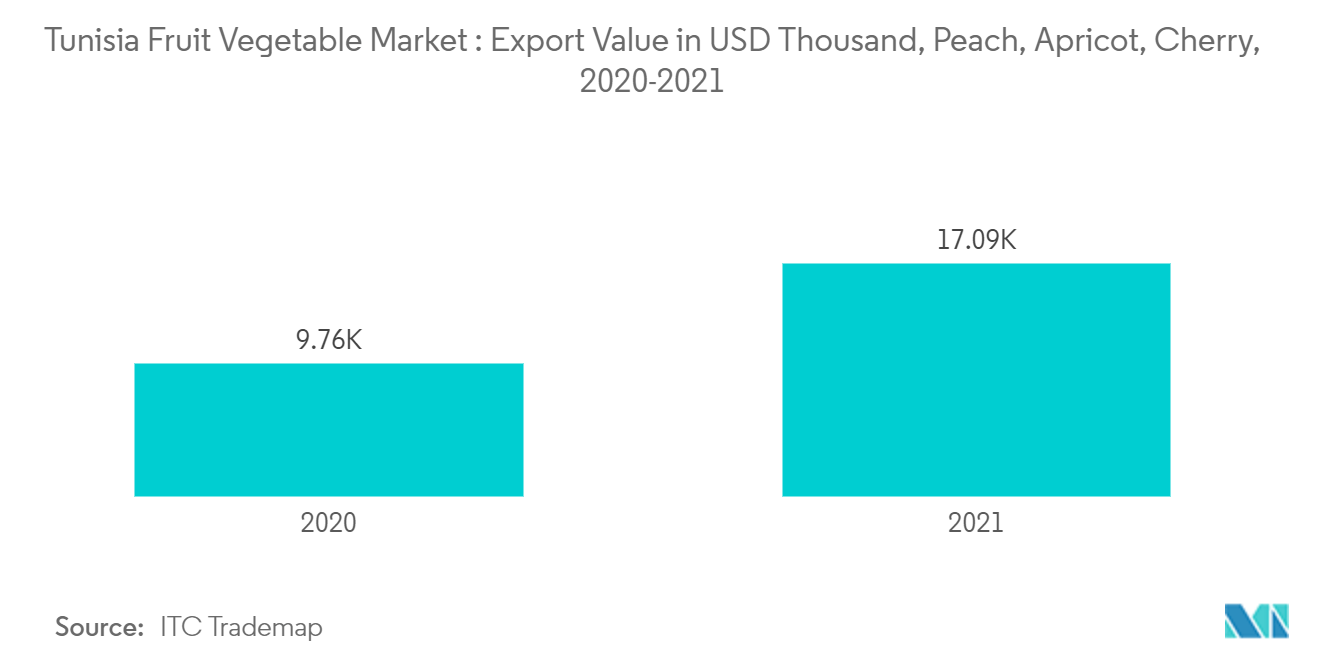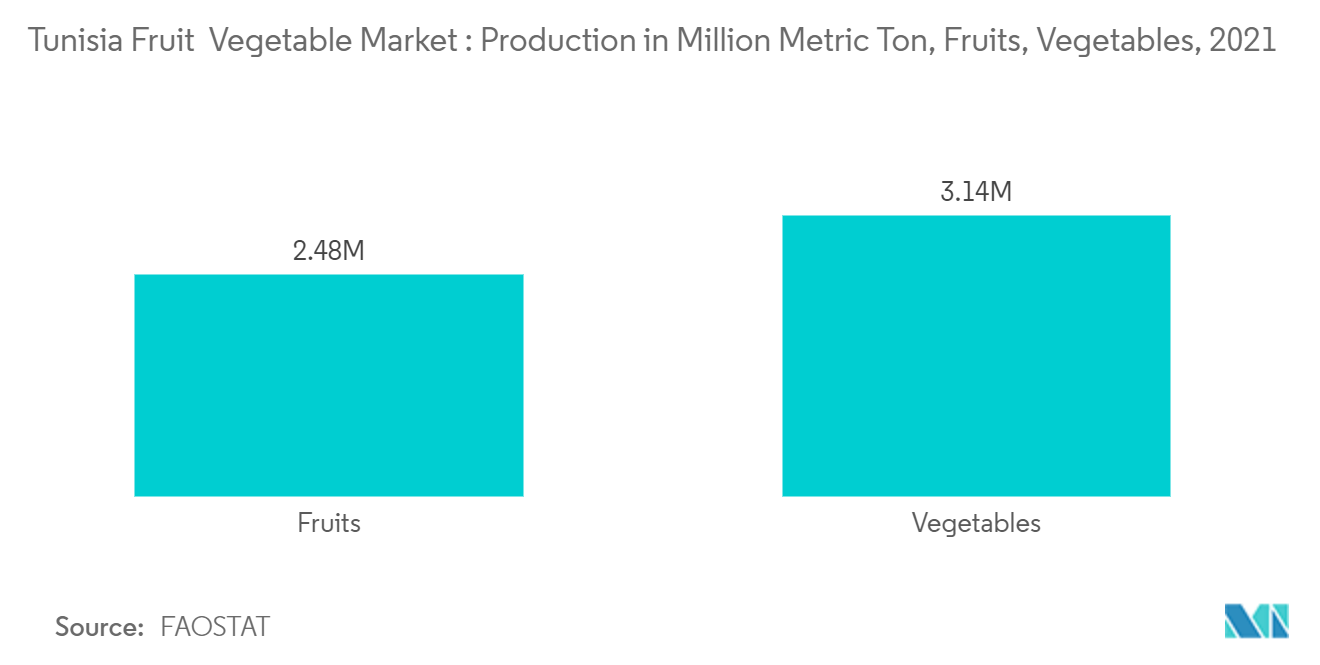Market Trends of Tunisia Fruit and Vegetable Industry
Rise in Export of Fruits and Vegetables
- The exceptionally dry climate of Tunisia contributes to a very low incidence of aflatoxin in dried fruits, making the country one of the major exporters of dried fruits in that region. The geography and the proximity to large international markets, like the European, Middle Eastern, and North African (MENA) regions, have made Tunisia the gateway for other African countries. Minimum support prices, market liberalization, enhanced rural transport infrastructure, and incentives for investment are also driving Tunisia's fruit and vegetable market.
- According to the data, pomegranates and watermelons were Tunisia's most exported fruits in 2021, with volumes exceeding 12,000 metric tons, followed by peaches with 9,200 metric tons. Morocco, Libya, France, Italy, Germany, and Spain are some of the major importers of Tunisian fruits, whereas Italy, France, the Netherlands, and Germany are the major importers of Tunisian vegetables.
- High-knowledge-intensive services, such as information and communications technology, business services, and digital financial services, are among the primary reasons restraining export diversification in the country. Leveraging high-knowledge-intensive services to improve productivity and competitiveness will be essential to the country's value-added diversification and growth.

Vegetable Production Dominates the Market
- Tunisia leads in the production of vegetables compared to fruits, which accounted for 3.13 million metric tons in 2021. This was an 8.6% increase compared to the production volume in 2018. Fruit production volume reached 2.47 million metric tons in 2021.
- Tomatoes, onion, chili, pepper, carrots, pumpkins, and cucumber are some of the vegetables grown majorly in the region, among which tomatoes and potatoes are the important comestibles of Tunisians. Non-profit organizations and various regional regulatory authorities promoting vegetable breeding an increase in food consumption, and the need for sustainable agriculture development are some of the aspects driving market expansion.
- The cultivation of processing tomatoes occupies a strategic position in the agricultural development policy of the country. According to the Ministry of agriculture, the sector mobilizes more than 10,000 farmers, with a total area that exceeded 16,000 hectares in 2021, for an estimated production of 1.42 million metric tons.
- The rising consumption of fresh tomatoes, as these products are easy, fast sources of energy and nutrition for consumers, is one of the segment's primary driving forces. Thus, the production of vegetables in the region has been significantly increasing in recent years, showing production growth.


